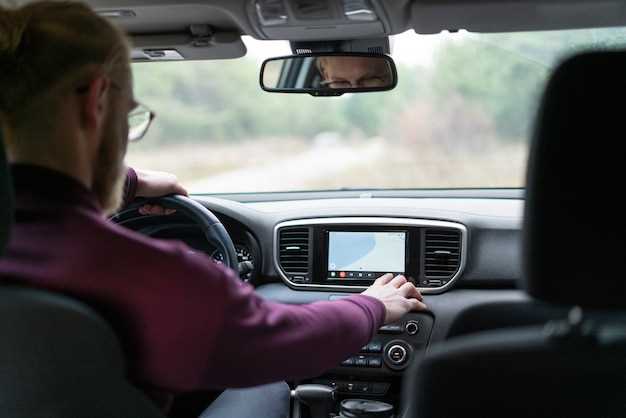
In today’s world, vehicle safety is a top priority for many drivers. Installing a dash cam in your Toyota is a proactive step towards enhancing your safety on the road. A dash cam not only records your journeys but also provides crucial evidence in the event of an accident or dispute. Understanding how to install this device correctly can save you time, money, and stress.
To begin, it’s essential to choose the right cam for your needs. There are various models available with different features ranging from basic video recording to advanced options like night vision and GPS tracking. Selecting a dash cam that meets your requirements will ensure you get the best performance for your safety and peace of mind.
Once you’ve purchased your dash cam, the installation process is straightforward. With the right tools and a step-by-step approach, you can easily set it up to ensure optimal functionality. In this article, we’ll guide you through the installation process, providing valuable tips and advice, so you can enjoy the benefits of having a reliable safety device in your Toyota.
Choosing the Right Dash Cam Model for Your Toyota
Selecting the appropriate dash cam for your Toyota is crucial for ensuring safety and obtaining clear evidence during incidents. Various models come with distinct features, so consider your driving habits and needs before making a choice.
Firstly, look for a dash cam with high video resolution. A model that records in 1080p or higher provides clearer images, essential for capturing important details such as license plates and road signs. This high clarity can be vital in case of disputes or accidents where proof is necessary.
Next, assess the field of view. A dash cam with a wide-angle lens can cover more of the road ahead, helping to record incidents happening at the edges of your vision. Typically, a field of view between 120 and 170 degrees is ideal for comprehensive coverage.
Night vision capabilities are another critical feature to consider. Many accidents occur in low-light conditions, so choosing a dash cam that excels in night recording can enhance your safety. Models with infrared technology or advanced low-light performance will capture sufficient detail after dark.
Consider additional features such as GPS functionality, which can provide location data during recordings. This can be particularly helpful during insurance claims or police reports, establishing not just what happened, but where it occurred. Furthermore, some dash cams also offer features like collision detection or parking mode, alerting you to potential impacts while your vehicle is parked.
Lastly, ensure that the dash cam is compatible with your Toyota’s design and setup. Some models are designed to be discreet and integrate seamlessly with your car’s aesthetics. A well-installed dash cam doesn’t obstruct your view and enhances your vehicle’s safety without being an eyesore.
In summary, when choosing a dash cam for your Toyota, focus on video quality, field of view, night vision, additional features, and compatibility. Making an informed choice will significantly contribute to the safety of your vehicle and its occupants.
Step-by-Step Installation Process for Your Dash Cam

Installing a dash cam in your Toyota is essential for enhancing your driving safety and capturing crucial footage during your journeys. Follow this detailed step-by-step guide to ensure a smooth installation process.
Step 1: Gather Your Materials
Before beginning the installation, collect all necessary materials, including the dash cam, mounting hardware, a microSD card, and a power source, such as a car charger or hardwiring kit.
Step 2: Choose the Installation Location
Select an optimal location on your Toyota‘s windshield. Ensure the camera is mounted behind the rearview mirror for unobstructed visibility of the road while avoiding glare or reflections.
Step 3: Clean the Windshield
Thoroughly clean the area where the dash cam will be mounted. Use an alcohol wipe to remove any dirt or grease, ensuring a secure attachment.
Step 4: Mount the Dash Cam
Remove the adhesive backing from the mount and carefully attach it to the chosen location on the windshield. Press firmly for at least 30 seconds to ensure a strong bond.
Step 5: Position the Dash Cam
Attach the dash cam to the mount and adjust its angle to capture the road ahead. Ensure the view is not obstructed by any vehicle components.
Step 6: Route the Power Cable
Carefully route the power cable along the edges of the windshield using clips or adhesive pads. Hide the cable under the headliner and along the A-pillar for a clean installation.
Step 7: Connect the Power Source
If using a car charger, plug it into the vehicle’s power outlet. For a hardwired installation, connect the wires to the fuse box according to the dash cam’s manual, ensuring a constant power source.
Step 8: Insert the microSD Card
Insert a compatible microSD card into the dash cam to enable recording. Ensure it is properly seated and formatted if necessary.
Step 9: Test the Dash Cam
Turn on your Toyota and check the dash cam for proper operation. Adjust the settings as required, ensuring that the date and time are correctly set for accurate timestamps on recorded footage.
Step 10: Finalize Installation
Once everything is in order, ensure all cables are secured and hidden. Regularly check the dash cam for firmware updates and functionality to maintain optimal performance.
By following these steps, your dash cam will be effectively installed, providing an extra layer of safety on the road.
Integrating Dash Cam Footage with Toyota Safety Features

Installing a dash cam in your Toyota can greatly enhance your driving experience by providing additional safety measures. The footage captured by the cam serves not only as evidence in case of an accident but also as a valuable tool to complement Toyota’s existing safety features.
To effectively integrate dash cam footage with your vehicle’s safety systems, start by ensuring that the dash cam has high-resolution capabilities and adequate storage. Features such as automatic incident detection and loop recording can significantly improve the functionality of your setup. When the cam detects a sudden stop or impact, it can automatically save the footage, which aligns well with Toyota’s pre-collision systems.
Many modern Toyota models come equipped with safety technologies like lane departure alerts and adaptive cruise control. By reviewing dash cam footage, drivers can identify how these systems perform in real-world conditions. This information allows for better understanding and optimization of the vehicle’s safety features, ensuring that they function as intended.
Furthermore, integrating dash cam footage into your routine can contribute to better driving habits. By analyzing recorded incidents, you can gain insights into your driving patterns, which can lead to improved safety on the road. It is crucial to complement dash cam evidence with awareness of Toyota’s safety alerts, creating a comprehensive safety net for both drivers and passengers.
In conclusion, combining dash cam technology with Toyota’s safety features elevates your vehicle’s protective measures. The synergy of these components not only provides documentation in case of accidents but also enhances overall driving safety and awareness.
